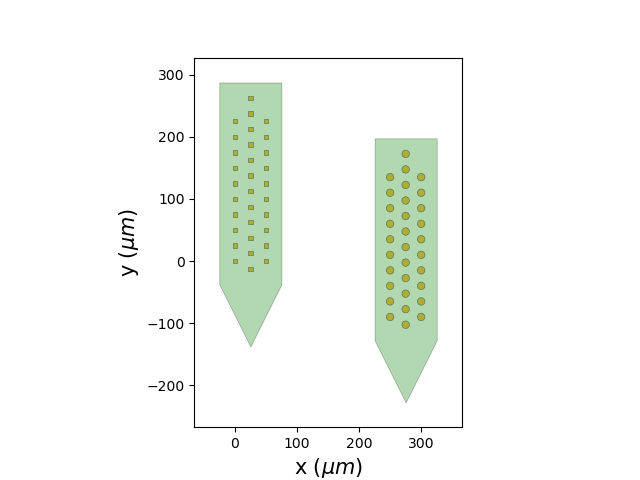Note
Go to the end to download the full example code.
Generate a ProbeGroup¶
This example shows how to assemble several Probe objects into a ProbeGroup object.
Import
import numpy as np
import matplotlib.pyplot as plt
from probeinterface import Probe, ProbeGroup
from probeinterface.plotting import plot_probe_group
from probeinterface import generate_dummy_probe
Generate 2 dummy Probe objects with the utils function:
probe0 = generate_dummy_probe(elec_shapes='square')
probe1 = generate_dummy_probe(elec_shapes='circle')
probe1.move([250, -90])
Let’s create a ProbeGroup and add the Probe objects into it:
probegroup = ProbeGroup()
probegroup.add_probe(probe0)
probegroup.add_probe(probe1)
print('probe0.get_contact_count()', probe0.get_contact_count())
print('probe1.get_contact_count()', probe1.get_contact_count())
print('probegroup.get_contact_count()', probegroup.get_contact_count())
probe0.get_contact_count() 32
probe1.get_contact_count() 32
probegroup.get_contact_count() 64
We can now plot all probes in the same axis:
plot_probe_group(probegroup, same_axes=True)

or in separate axes:
plot_probe_group(probegroup, same_axes=False, with_contact_id=True)
plt.show()

Total running time of the script: (0 minutes 0.341 seconds)